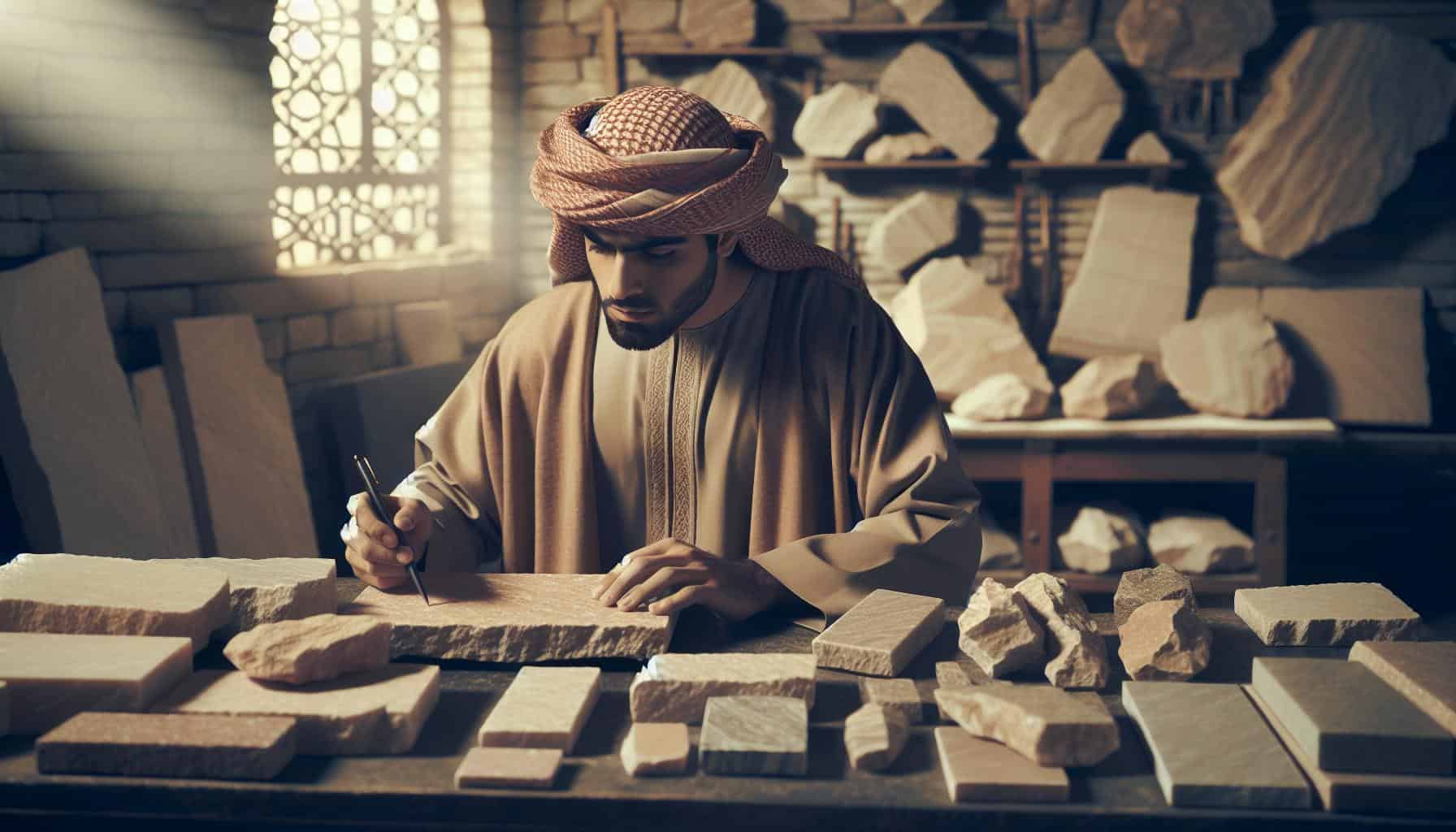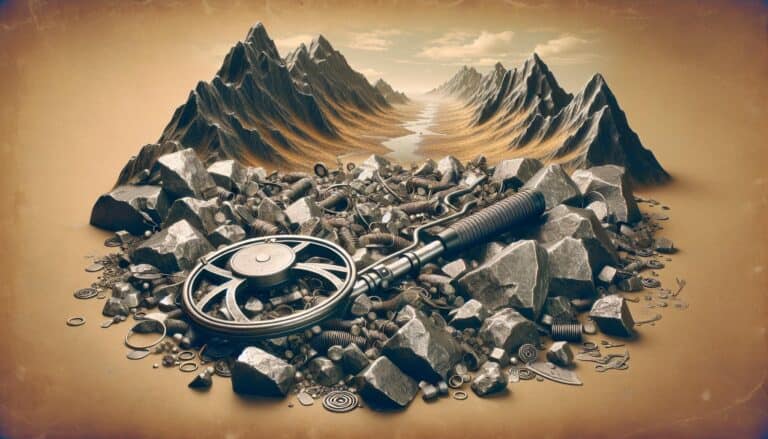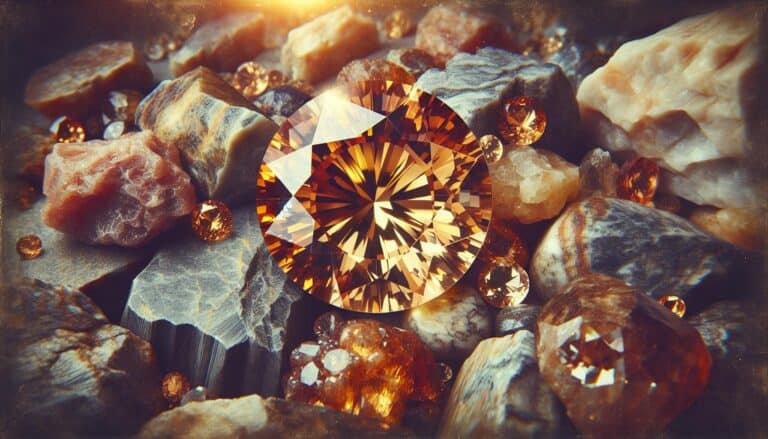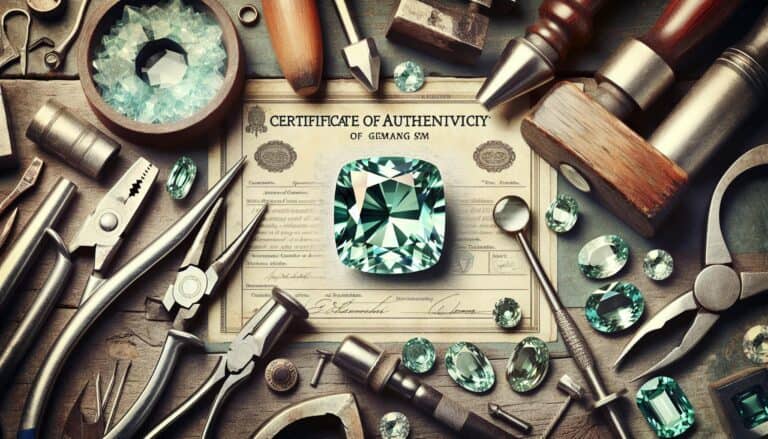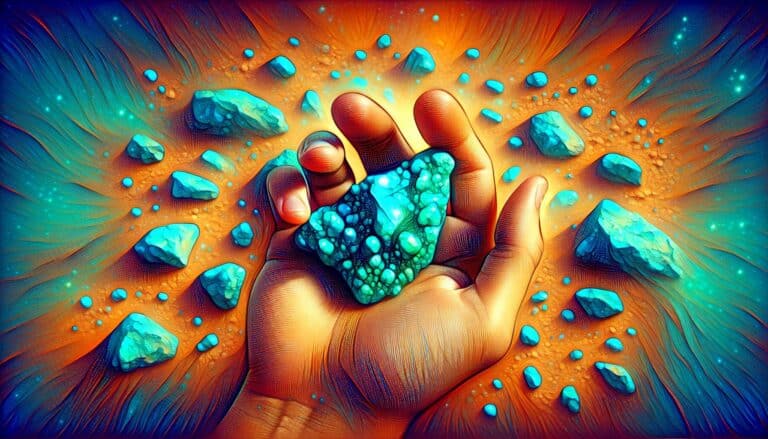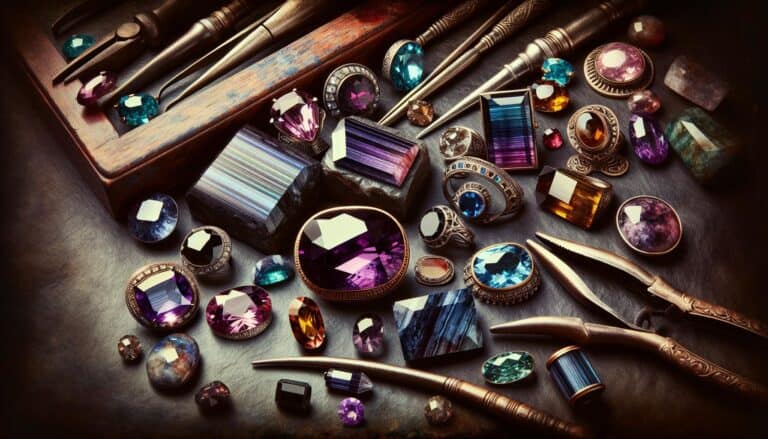Ever wondered about the value of that stunning sandstone you’ve seen in architectural marvels or cozy backyard designs?
Well, you’re not alone. Sandstone’s worth can vary widely based on several factors, and you’re about to get the lowdown on what drives its price.
Whether it’s the unique color variations, the size of the slabs, or its rarity, understanding sandstone’s value is key if you’re considering it for your next project.
Stick around as we delve into the nitty-gritty of sandstone pricing and what you should expect before making an investment.
Sandstone’s value varies with color, size, rarity, and use. Its price is influenced by color, clarity, cut quality, market demand, and availability. High-quality, unique specimens are prized. To assess worth, consider grading, market trends, and ensure authenticity through certification and appraisal.
What Is Sandstone?
Sandstone is one of the most common types of sedimentary rock. You’ll find it in a spectrum of colors, textures, and compositions, thanks in part to the various minerals it contains, like quartz and feldspar. These minerals also contribute to sandstone’s renowned durability and weather-resistant qualities, making it a top choice for construction and architectural projects.
Formed over millennia, sandstone is the product of sand accumulation often found in river beds, beaches, or desert dunes. The sand particles are then compressed and bound together by natural cements such as silica, iron, lime or clay. Because of its natural formation process, sandstone is available in different levels of porosity and density, which can significantly affect its strength and use in construction.
When you’re considering sandstone for a project, you’ll encounter several types, each with unique characteristics:
- Quartz sandstone, which is resistant to weathering due to its high quartz content.
- Arkose, typically characterized by a reddish color due to a higher presence of feldspar.
- Graywacke, known for its hardness and dark color, composed of quartz, feldspar, and small rock fragments.
Professionals in architecture and construction often favor sandstone for its versatility and aesthetics. Its natural appearance can range from a smooth and uniform look to a rugged, grainy texture, ideal for both modern and historic designs. Plus, it’s not just the visuals—sandstone has excellent insulation properties, making it energy-efficient for buildings where temperature control is essential.
In terms of maintenance, sandstone does require some care to preserve its appearance and longevity. Regular cleaning, sealing, and sometimes, restoration, are necessary to maintain its condition, especially in outdoor environments where it is exposed to the elements.
When evaluating the worth of sandstone, consider not just its aesthetic appeal and structural integrity, but also its maintenance needs. Each factor contributes to the stone’s practical value and can influence your financial investment in your project. Keep in mind that quality sandstone, while initially more costly, often proves to be a prudent choice in the long term due to its durability and timelessness.
Sandstone Prices: Factors That Affect Value
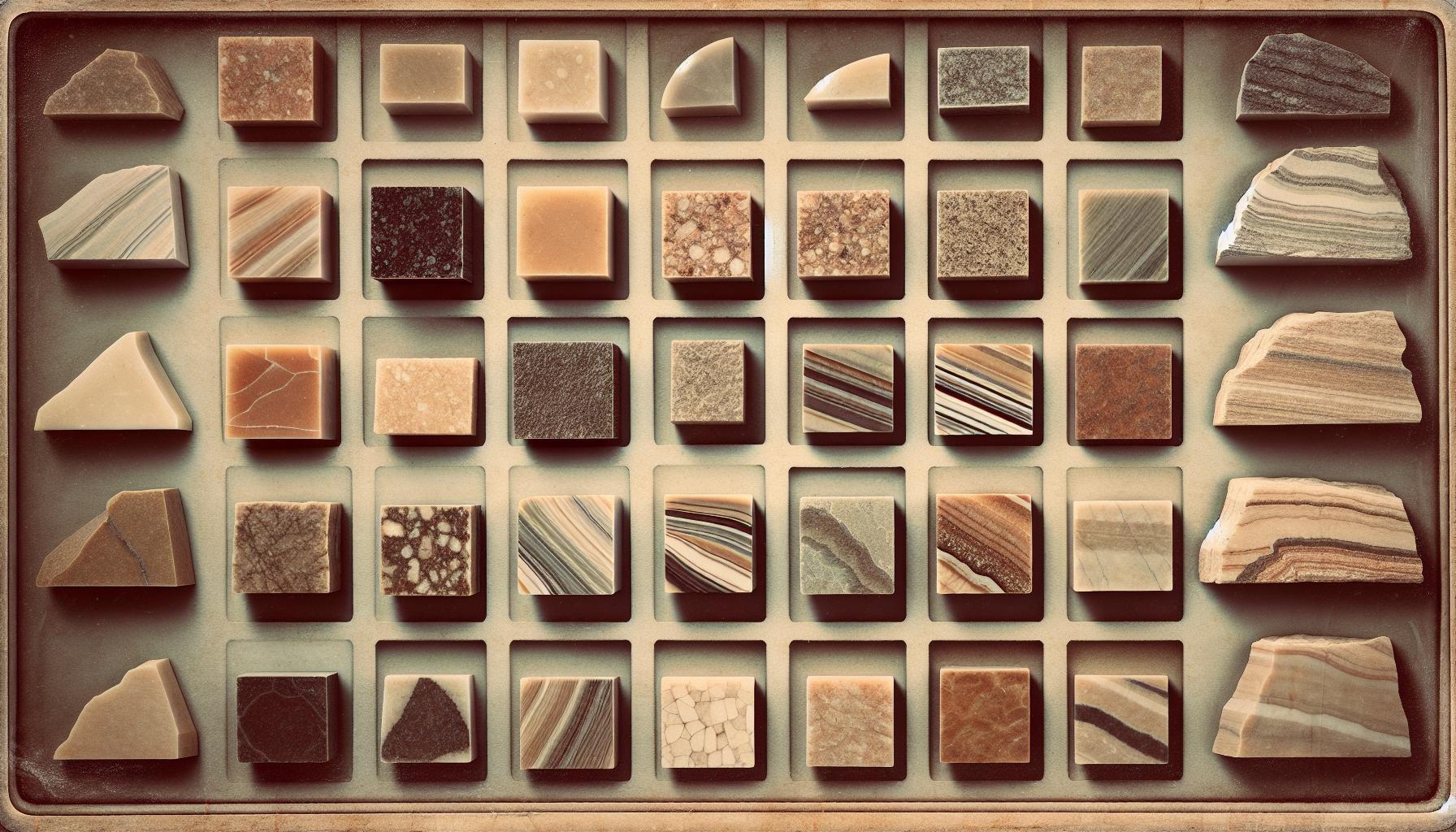
Color, Clarity, and Cut Quality
When you’re considering the value of sandstone, it’s essential to evaluate the color, clarity, and cut quality. These characteristics greatly influence the price.
- Color: The hue of sandstone ranges from yellow to red, beige to white, and sometimes even blue or green. The richness and consistency of the color can make a particular piece more appealing and hence more valuable.
- Clarity: While one might not associate clarity with stone the way you would with diamonds, in sandstone, it implies the uniformity and absence of impurities. A clear, uniform texture without any veins or blemishes tends to fetch a higher price.
- Cut Quality: The craftsmanship in extracting and shaping the sandstone can impact its value significantly. Precisely cut stones that fit together seamlessly are often more expensive due to the skill and time required to produce them.
Each factor contributes to the overall aesthetic appeal of the stone, which is a primary determinant of its market worth.
Market Demand and Availability
Market forces play a crucial role in determining sandstone prices. The principle of supply and demand is always at work, and you’ll find that sandstone’s value is no exception.
- Market Demand: Design trends greatly influence the demand for different types of sandstone. For example, a current trend favoring earth tones could boost prices for beige and brown sandstones.
- Availability: The rarity of a specific color or type of sandstone also dictates its price. If the stone is only available from one quarry that’s nearing exhaustion, its scarcity can drive up costs. Conversely, abundant supply typically lowers prices as competition increases.
Keep in mind that transportation and import fees can also affect market prices for sandstone. If you’re sourcing your stone from a distant location, be prepared for these additional costs to factor into the overall price. Balancing your desire for a particular type or color with the availability and market demand can help you make a cost-effective choice for your project.
Understanding Sandstone: A Rare Gem

The Rarity of Sandstone
Sandstone may not immediately come to mind when you think of precious stones, but its uniqueness cannot be overstated. Unlike widely available materials, the rarest types of sandstone are those with unique hues and exceptional clarity. These special characteristics elevate its status and contribute to its rarity in the market. The rarity factor also stems from the fact that sandstone forms from centuries of sedimentation and compression, making it a time-intensive natural process.
- Unique formations: Each sandstone block is the result of thousands of years of earth’s history, making distinct patterns and colors which are often one-of-a-kind.
- Geographical limitations: Certain types can only be found in specific regions, adding to the exquisiteness and value of sandstone.
- Demand vs. Supply: As with any rare commodity, the less there is available, the more sought-after it becomes, thus raising the economic value.
It’s crucial to understand that while some types of sandstone are abundant, those with particular patterns and colors that catch the eye of designers and architects are the ones that command a premium. Evaluating Rarity in sandstone involves scrutinizing its color spectrum as the most unique and vibrant colors tend to be the most rare and desirable.
| Rarity Aspects of Sandstone | Impact on Value |
|---|---|
| Unique Hues and Patterns | High Increase |
| Limited Geographic Source | Moderate Increase |
| Time-Intensive Formation | Slight Increase |
By considering these aspects, you’ll glean why certain sandstone pieces are worth more than others and perhaps why they’re worth waiting for.
Origins and Characteristics
Understanding the Origins and Characteristics of sandstone provides insight into its intrinsic value. Sandstone is formed from layers of sand that have been consolidated over time. The binding material, or matrix, often comprises silica, calcium carbonate, or iron oxide, and its composition leads to a diverse range of durability and weathering properties.
- Texture and grain size: These vary significantly, affecting both the stone’s appearance and its suitability for different applications.
- Color variety: Originating from various minerals and oxides, the coloration spans a spectrum from whites and grays to reds and yellows, guaranteeing a multitude of choices for any design palette.
- Porosity: This characteristic plays a pivotal role in the stone’s usage, as more porous varieties may not weather as well in harsh climates, impacting longevity and use.
Sandstone Grading and Valuation
The Grading System for Sandstone
When you’re delving into the world of sandstone for construction or decoration, understanding its grading system is crucial. Sandstone grading often involves assessing the durability, strength, and color consistency of the stone. Builders and architects commonly use a standardized scale to grade sandstone, which allows them to determine the most suitable type for specific projects.
- Grade A sandstone is top-quality with uniform particles, consistent color, and high durability.
- Grade B pieces may have minor natural defects and a bit more variation in hue.
- Grade C is considered lower quality with visible irregularities and variations in texture and color.
These grades affect the stone’s worth, with Grade A commanding the highest prices. It’s essential to note that there’s no universal grading standard, so it’s important to refer to the grading criteria set by the specific quarry or supplier you’re dealing with.
Certification and Appraisal
To ensure the sandstone you decide on meets your project’s requirements, look for certification from reputable industry organizations. Certified sandstone implies that it has been tested and meets certain standards for quality and safety. Usually, a certificate will accompany the highest grades of sandstone, giving you added assurance about your investment.
Should you opt for rare or historical sandstone, consider obtaining a professional appraisal. An appraisal can give you an accurate value based on factors such as provenance, age, and historical significance. This is particularly relevant when dealing with sandstone for restorations or when incorporating it into structures of cultural or historical importance.
For modern applications, factors influencing appraisal may include:
- Rarity of the color or texture
- Geographic origin
- Size and dimensions
- Suitability for the intended use
Remember, getting your sandstone appraised by an expert can also be great for insurance purposes or if you ever plan on selling. Keep in mind that prices fluctuate based on market demand and availability, so staying informed will help you make savvy decisions when it comes to valuing your sandstone.
Current Market Trends in Sandstone Pricing
Understanding the latest trends in sandstone pricing is key to making informed decisions when purchasing or investing in this natural stone. Over recent years, there’s been a noticeable shift in the factors that influence sandstone costs. Construction booms in residential and commercial sectors directly affect demand and thus prices of sandstone. Also, as eco-friendly building materials become more sought-after, sandstone’s natural properties have made it a premium choice.
The cost of raw materials and production plays a significant role in sandstone pricing. Inflation and increases in the cost of labor and equipment have led to an uptick in prices. This impact is further compounded by logistical challenges; factors such as transport costs, import taxes, and tariffs can add to the final price tag of sandstone.
| Factor | Description | Impact on Pricing |
|---|---|---|
| Construction Boom | Higher demand in building sectors increases sandstone utilization. | Uplift in Prices |
| Eco-Friendly Trend | Rising preference for sustainable materials. | Bolsters Sandstone Value |
| Production Costs | Cost of labor, equipment, and inflation. | Heightens Pricing |
| Logistics | Transport expenses and tariffs. | Additional Costs Incurred |
Sandstone’s versatility also means it’s swayed by design trends. Current preferences for minimalist and natural aesthetics pave the way for sandstone features in modern homes and urban architecture, potentially driving up costs.
If you’re tracking the value of your own sandstone collection or inventory, these market fluctuations highlight the importance of regular appraisal updates. Markets are dynamic, and what may have been an accurate valuation a year ago might not reflect today’s worth. By staying in tune with these trends, you can better anticipate changes and maintain a realistic perspective on your sandstone’s value.
When sourcing sandstone, it’s vital to consider reputable suppliers who can provide consistent quality. While the cheapest options might seem tempting, they could lead to higher expenses down the line due to potential issues with durability and appearance. Remember, initial cost savings can be easily overshadowed by the need for repairs or replacements.
The Most Expensive Sandstone
When you’re in the market for premium building materials, it’s crucial to know which types of sandstone pack the heftiest price tag. The Most Expensive Sandstone varieties are often those that are rare or possess unique aesthetic qualities. Factors like unusual color patterns, historical significance, or extraction from a renowned quarry can skyrocket prices.
Not all sandstone is created equal, and the cost can vary dramatically. For instance, Yorkstone, known for its hard-wearing properties and rich color, is a high-end choice often used in prestigious building projects. Its price is reflective of its durability and the luxurious finish it offers. A similar situation arises with Australian Sydney sandstone, highly valued for its stunning hue and strength.
To put this into perspective, here’s a quick rundown of some sandstone types and their typical price ranges:
| Sandstone Variety | Price Range (per square foot) |
|---|---|
| Yorkstone | $70 – $120 |
| Sydney Sandstone | $100 – $150 |
| Indian Sandstone | $30 – $70 |
| Arizona Red | $40 – $80 |
It’s clear that the rarity and desirability of the stone greatly influence the price. For luxurious homes or landmark buildings that aim to make an architectural statement, the investment in high-quality sandstone can be substantial.
When considering these top-of-the-line sandstone options, keep in mind that authenticity certificates and quality inspections are essential. Provenance can significantly affect value, and ensuring that you’re getting what you pay for helps protect your investment.
It’s worth noting that while high costs can be indicative of more desirable stone, they also reflect the expenses associated with quarrying, cutting, and finishing these materials to meet the standards expected in premium construction. The distance the stone must travel from quarry to construction site also adds to the price tag, making locally sourced options perhaps more appealing for your project.
Remember to factor in the long-term benefits of choosing a more expensive sandstone. The durability and timeless appeal of these stones often translate to a higher resale value of the property, making them a wise choice for not just aesthetics but also for economic reasons over time.
Buying Sandstone: Tips and Recommendations
When you’re in the market for sandstone, making an educated choice can make all the difference.
Where to Purchase High-Quality Sandstone
Finding a reputable dealer is essential in securing high-quality sandstone for your projects. Start by doing your due diligence and research local stone yards and suppliers. They often have a variety of options and can provide valuable insights into the best sandstone for your needs. Consider these factors:
- Reputation of the supplier
- Range of sandstone offered
- Knowledge and customer service quality
Online marketplaces can also be a convenient resource, but you’ll want to ensure that you’re able to verify the quality of the stone before purchasing.
Ensuring Authenticity and Value
To guarantee you’re getting what you pay for, always ask for authenticity certificates, especially when dealing with high-end or rare sandstone varieties. Quality inspections are equally important. Here’s what you can do to ensure the authenticity and value of your purchase:
- Request authenticity documents
- Have a professional conduct a quality inspection
- Look into the history and origin of the stone
Remember, investing in sandstone isn’t just about the initial cost—it’s about the value it brings to your property over time. Despite the higher upfront cost, premium sandstone is an investment that often pays for itself through increased durability and potential resale value.
Conclusion: Buying & Selling Sandstone
Determining the value of sandstone involves more than just upfront costs.
You’ve learned that the true worth lies in its lasting impact on your property’s appeal and its potential to enhance resale value. Remember, securing quality sandstone means doing your homework, seeking out reputable dealers, and ensuring the authenticity of your purchase. With the right approach, you’ll find that investing in premium sandstone is not merely an expense but a wise decision that stands the test of time.
Embrace the journey of adding natural beauty to your space, knowing that the benefits of sandstone extend far beyond its initial price tag.

